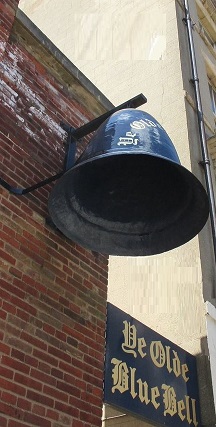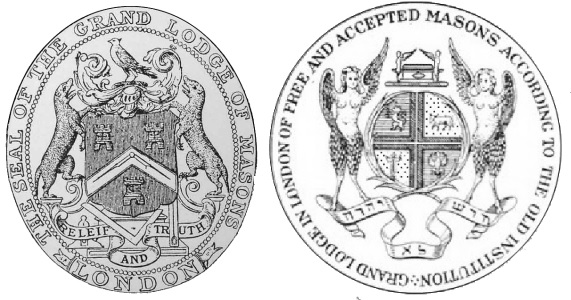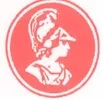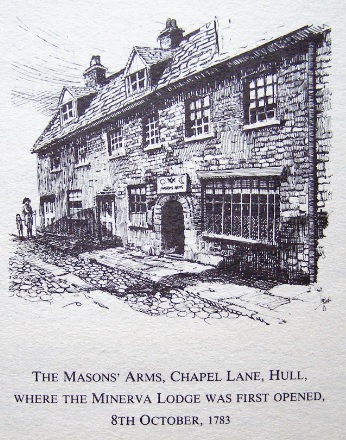(These pages are still under reconstruction: your patience is appreciated.)
Minerva History
Before the Union
Many societies have members who are averse to change, and Freemasonry is no exception. Nonetheless, change is an essential feature of any living organism. Those Brethren who maintain “We’ve always done it this way” should consider the beginnings of the Minerva Lodge in 1782, before gas lights appeared, when the typical outfit for a Freemason would be a full-skirted knee-length coat, knee breeches (with white silk or linen stockings) a long waistcoat, a linen shirt with frills at the cuffs, with a frilly cravat. Tricorns were fashionable, often over a powdered wig, though the latter was gradually going out of fashion during the reign of George III. Ill health was a frightening issue – smallpox, cholera and typhus were commonplace alongside other contagious diseases, and medicinal treatments (if the bleeding was unsuccessful) often included compounds of mercury and arsenic. “We’ve always done it this way”? Not so.

Minerva Lodge’s considerable history is too long to be detailed here. The following highlights (and lowlights) are sourced from Two Hundred Years of Freemasonry in Hull – History of the Minerva Lodge of Freemasons No. 250, Hull 1783 – 1983 by J R Ellerby, a Past Master of the Lodge, printed and published by Mark C Brown & Son Ltd., Hull, England; the historical recordings of H M Austin PGStdB and C G Hopley PPJGW who continued the work of J R Ellerby; from the UGLE website; The Masonic Heritage of Kingston upon Hull by Dr Barry Hovell of Kingston Lodge 1010, 2009, printed by Craig Maurier; from W Bro Neil Armstrong, historian and masonic researcher, for whose contributions in compiling and editing this history I am exceedingly grateful; from the minutes of Minerva meetings, from the Internet and elsewhere. This website compilation is not a formal history and has no academic pretensions. The editor strives for correctness and objectivity, but may occasionally add sidelines and comments for clarification or enlightenment.
Eddie Wildman
Tavern Lodges
 In the early days of Freemasonry, Lodges took place in taverns, and this was true of several Hull Lodges which met severally at the Cock Tavern then the Black Bull, the George in Church Lane and at the King’s Head in the Market Place and later the Blue Bell.
In the early days of Freemasonry, Lodges took place in taverns, and this was true of several Hull Lodges which met severally at the Cock Tavern then the Black Bull, the George in Church Lane and at the King’s Head in the Market Place and later the Blue Bell.
Meanwhile in London there were two rival Grand Lodges with different practices, questioning each other’s authority, for in 1751 Scottish and Irish Freemasons labelled the original Grand Lodge “Moderns” and called themselves “Antients” and this situation was not reconciled for over sixty years.

The first dock in Hull opened in 1778. This encouraged new industries, such as corn-milling and seed-crushing to flourish. Shipbuilding was an important industry - HMS Bounty was built in Hull in 1784, at Blaydes Shipyard. Earle's Shipbuilding and the Wilson family were significant industries.
William Wilberforce was elected MP for Hull in 1780; he is perhaps best known for his efforts to abolish the slave trade in the British Empire resulted in a bill being passed in 1833, three days before he died.
According to Ellerby, "Minerva Lodge was founded in 1783 although there are good grounds for believing it was opened in 1782, firstly because the Royal Arch Warrant states that our Chapter held its first meeting on 6 April 1783, whereas the Craft Warrant is dated September 1783, and, as everyone knows, Craft always precedes Chapter. Secondly, because the Silver Seal presented in 1796 bears the date 1782 and thirdly, throughout the annals of the Lodge in the early days it stated that “in 1782 – A dispensation issued and business done.”
 The Minerva Royal Arch Chapter was founded as number 35. Chapters were then numbered in their own rotation, independently to the Lodges. As other Chapters became extinct, the Humber Chapter increased in senioroty to become the third warrented Chapter in Yorkshire. In 1817, following the Grand Chapter Union of Ancients and Moderns, it took on the number of its parent Lodge.
The Minerva Royal Arch Chapter was founded as number 35. Chapters were then numbered in their own rotation, independently to the Lodges. As other Chapters became extinct, the Humber Chapter increased in senioroty to become the third warrented Chapter in Yorkshire. In 1817, following the Grand Chapter Union of Ancients and Moderns, it took on the number of its parent Lodge.
Lodge Numbers have been amended by UGLE over time, to “fill the gaps” left by defunct Lodges (such as the first four in Hull.) Minerva, originally allocated the number 451, changed to 363 in 1792, to 467 in 1813, to 311 in 1832, and to 250 in 1863. There was also the problem of the Unlawful Societies Act of 1799, which prevented any "new" Lodges being formed, so the numbers of defunct Lodges were adopted, thus claiming a previous heritage. Neil Armstrong's background information here is useful:
Anno Regni GEORGII III. tricesimo nono. An Act for the more effectual Suppression of Societies established for Seditious and Treasonable Purposes; and for better preventing Treasonable and Seditious Practices. Generally referred to as ‘The unlawful Societies Act of 1799.’
The Act was aimed at restricting the activities of radical secret societies working against the Crown of England, such societies that required their members to take oaths upon joining. A magistrate's licence was needed for any premises on which public lectures were held or any fee-charging public reading room.
Printers were tightly regulated, because one of the main problems in the Government's view was that seditious pamphlets were widely distributed and untraceable. Any printer was required to register, while all printed matter was required to carry the name and address of the printer on the titlepage and/or the final page. They were further required to declare all items they had printed to magistrates and retain copies for inspection.
The primary objective of the Act was to suppress all secret activity that could involve the Jacobites and/or the Roman Catholic Church. The fear of insurrection was at its height, America and France had already suffered revolution. The Government were obliged to maintain a Protestant monarchy. Early workers unions were also repressed by the Act.
As originally drafted, the Act would have affected Freemasonry, but the Earl of Moira, (the Acting Grand Master of the premier Grand Lodge) and the Duke of Atholl (Grand Master of the Antients) met separately with Prime Minister William Pitt the Younger to explain the nature of the Craft, proclaiming that every Lodge meeting included a “Toast to the Crown”.
As a result of that plea the Fraternity escaped inclusion and any Masonic lodge existing at the time of introduction of the Act was exempted. So long as they maintained a list of members and supplied it to the magistrates. This Act remained on the statute books until its repeal in 1967.
 There is part of the opening ritual of a Masonic Lodge which alludes to this: "to await the return of the Junior Deacon" reflects the latter's instruction to take a list of the members to the local Magistrate. [Cf page 10.]
There is part of the opening ritual of a Masonic Lodge which alludes to this: "to await the return of the Junior Deacon" reflects the latter's instruction to take a list of the members to the local Magistrate. [Cf page 10.]
The first Minerva minute book records the formal opening on 8 October 1783, when the Lodge met at the Masons Arms in Chapel Lane (which is named on the Warrant.) There was no consecration such as we have nowadays, though several notable and distinguished Masons were present: the Deputy Provincial Grand Master, the Past Deputy Grand Senior Warden and the Assistant Grand Junior Warden.
The Lodge was opened in the third degree, three gentlemen were proposed to be made Masons and accepted. The Lodge was closed in the third degree.
The Lodge was then opened in the Fellow Craft Degree, and the proposed gentlemen were “duly raised to the first degree in Masonry”. It appears to have been customary to confer the first and second degrees on candidates on the same evening, and the first minute book records the Lodge being opened in the second degree on all occasions – the first mention of it being reduced to the first degree being in 1797.
The office of Deacon was introduced in April 1798 according to the minutes, and a Junior and Senior Deacon were installed for the first time on the 23rd May. The jewels, provided by Bro Fowston were in the form of the Sun and Moon in silver.
The minute book which covered the period from October 1783 to May 1799 notes:
“On 25 July 1798 Brother Mills proposed John Scott to be made a Mason as a case of emergency, balloted for and accepted him. Entered, passed and raised him in the three degrees of Craft Masonry.”
 Just before Christmas in 1783 Brother Chapman was requested to make special chairs for the Worshipful Master and the Wardens, modelled after the Grand Lodge Chairs in York, cautioning him “not to exceed in value the sum of ten guineas, gilding and painting the same excepted.” The eventual cost was more than double that, and the chairs had canopies over them – these are no longer there, but the chairs remain, being moved from the Masons Arms to Dagger Lane some time before 1802. The cherubim recall the arms depicted above, and were later incorporated into the arms of United Grand Lodge. For Hull, this was a time of prosperity, at least for the middle and upper classes.
Just before Christmas in 1783 Brother Chapman was requested to make special chairs for the Worshipful Master and the Wardens, modelled after the Grand Lodge Chairs in York, cautioning him “not to exceed in value the sum of ten guineas, gilding and painting the same excepted.” The eventual cost was more than double that, and the chairs had canopies over them – these are no longer there, but the chairs remain, being moved from the Masons Arms to Dagger Lane some time before 1802. The cherubim recall the arms depicted above, and were later incorporated into the arms of United Grand Lodge. For Hull, this was a time of prosperity, at least for the middle and upper classes.
The Minerva Chapter was opened in 1784.
Hull was the largest whaling port in the country, and it developed as a major fishing centre, with seafood sent by rail all over the country. But Hull was growing increasingly important for export; the woollen and textile industries arriving (since the improvement of the Trent and the developing canals) from much of northern England. Manchester merchants described Hull in 1795 as "the key through which our manufacturers can alone find a passage for the markets of Germany, Switzerland and the borders of Iataly." Shipbuilding flourished. Banks and insurance companies increased in importance. Hull was an ideal place for Freemasonry to grow.
In 1796 the Initiation Fee was £3/3/-. Exaltation £1/3/-; Templar 10/6d.
Returns to Grand Lodge in 1798 showed Minerva Lodge had 23 members.

